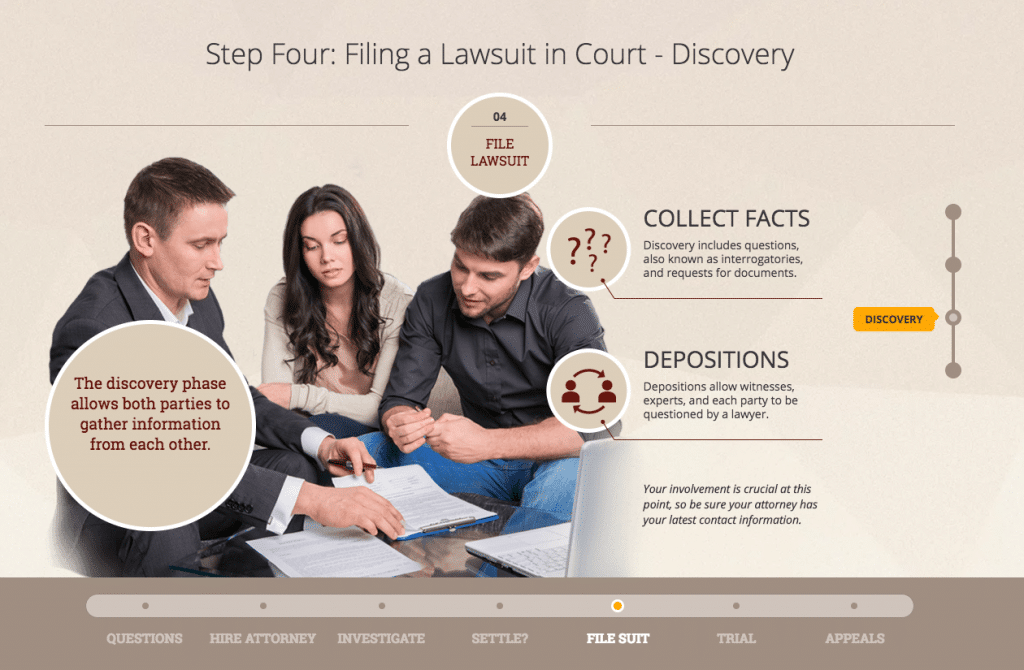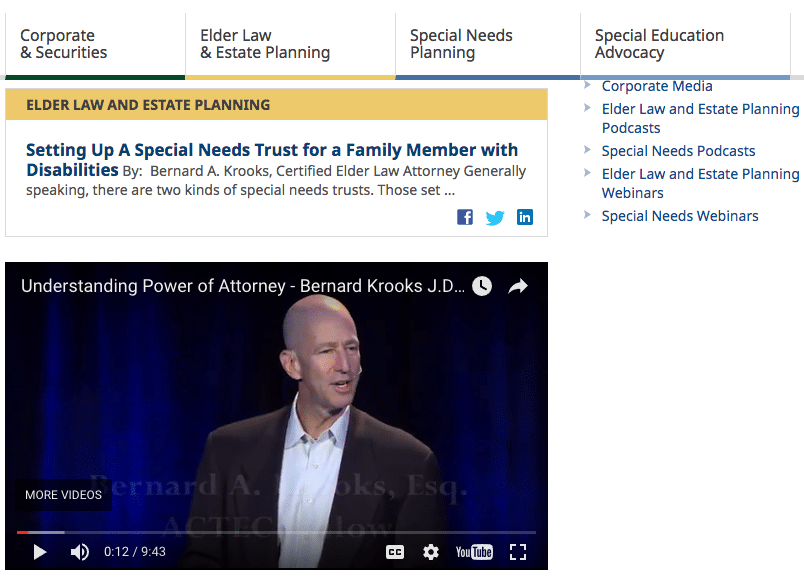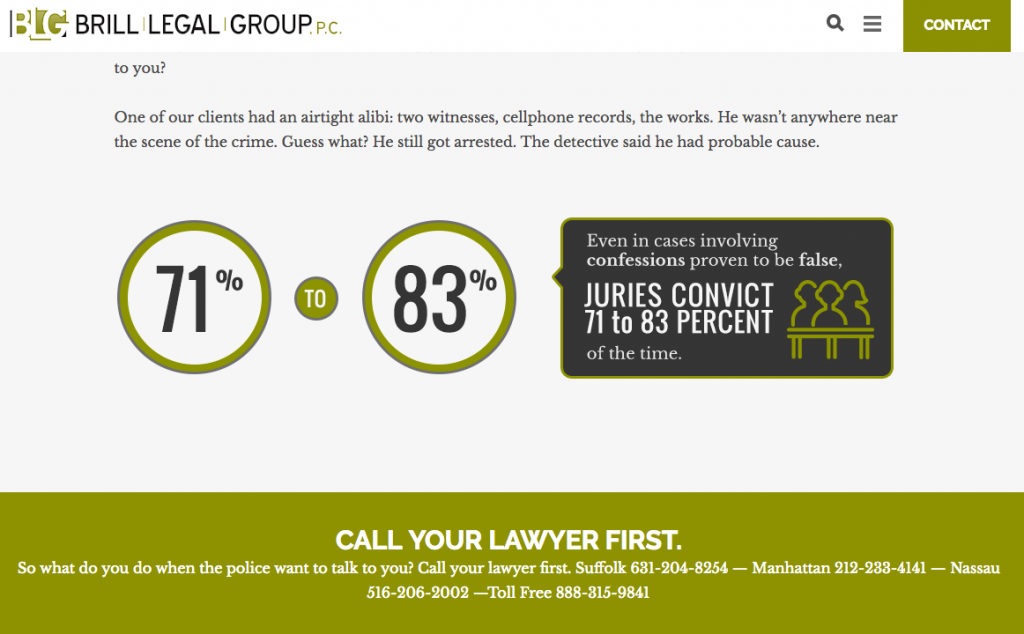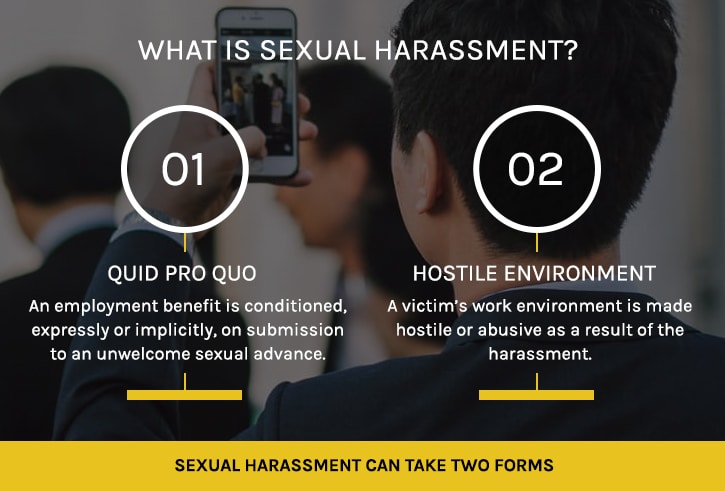You’ve done everything right so far. Your SEO has worked the way it should and now visitors have found your site. Your analytics indicate that you’re receiving heavy traffic, but visitors are only staying on your site for about 30 seconds. They’re scrolling through your homepage, but before long, they’re gone.
While your website may draw visitors in with desirable design elements and a clear call to action, it may still be struggling to keep visitors there long enough to stay interested. You might have good copywriting to describe to your visitors why you are different than other law firms, or your website might impress them with its professional and innovative design, but there’s more to holding visitors’ attention than verbal or visual persuasion.
Effective law firm websites go beyond essential design and copywriting strategies by utilizing creative and diverse features to engage visitors. The following tools can be used to offer diverse perspectives into your practice to help engage visitors on your site, so that they can stay long enough to learn more about who you are, and why you are different than other law firms.
1) Interactive Slideshows
While well-written copy and attractive visual design are absolutely key in creating a site that draws the visitor in, interactive slideshows can add tactile engagement that will keep them on your site longer. When an interactive slideshow is organized for clarity and guides a visitor through a process, it can enhance the user experience by a landslide.

Take the Personal Injury Lawsuit Process slideshow on personal injury marketing client, Briskmanandbriskman.com's website as an example. Scrolling down the homepage, users will find “What Can I Expect During My Personal Injury Lawsuit,” an interactive slideshow that lays out the process of a personal injury lawsuit, from start to finish. Users can click through each section to learn about the main steps of the legal process, including calling a lawyer, filing a suit, going to trial, and finally, what happens after trial.
An interactive slideshow can be seamlessly embedded into your homepage, allowing users to encounter it organically and navigate its slides with ease. Not only can it be used to offer important knowledge about your law firm and your services, but it can also teach users about a legal process they might not know about.
2) Embedding powerpoint slideshows from past events
Sharing a powerpoint presentation from a past event can tell your visitors that you are actively engaged in your community and field of law, and will also offer valuable information that they can use during their legal research. They will also appreciate that you shared your professional insights with the public, which demonstrates your commitment to your clients.
SlideShare, created by LinkedIn, is a slide hosting service that allows users to upload presentations directly onto their website. If you have a PowerPoint, PDF, Keynote, Microsoft Word document or OpenDocument presentation from a past event, you can use SlideShare to share it on your site.
You want your site to offer various perspectives from which users can see why you are different than other law firms, and by offering a glimpse into your professional work, visitors will likely gain confidence in your firm.
3) Offer informative videos
If you’ve created a video that offers information about your firm or area of practice, it should be something you want anyone scrolling through your site to see. Users appreciate videos because of the ease with which they can absorb the information they provide. They also offer users insight into who you are. This element of personalization can be the extra push site visitors need to contact you for a consultation.

Embedded into the homepage of Elder Law and Estate Planning law firm, Littman Krooks LLP, is a video in which attorney Bernard Krooks of explains the importance of having a power of attorney. The video features Krooks giving a public talk in which he demonstrates his knowledge, professionalism, expertise, and approachability. The video appears professional, with high image quality, and is unobtrusively embedded into the middle-to-bottom section of the homepage, allowing users the option to watch it if they please.
When planning to include a video on your site, be sure to avoid low-quality videos with unprofessional graphics or content that would detract from your site in any way. Instead, choose a flattering video that offers useful information to visitors that will help them feel confident in your professionalism and dedication to your clients.
Read: Five Ideas for Creating Compelling Video Content
4) Long form content
Long form content can be used strategically to boost your SEO, but it can also benefit site visitors by offering specific, detailed, digestible information about a topic. By writing about a topic through a long form page, you can delve more deeply into a topic than you would in a blog. A long form page fleshes out information that would benefit those interested in knowing more about the way a legal process works.

The long form page titled “Do the Police Want to Talk to You?” on the site for criminal defense law firm, Brill Legal Group, informs readers what to do what a person should do when the police want to talk to them. The page lays out common misconceptions and dangers about talking to the police without a lawyer, and makes use of interactive infographics that contain digestible bits of useful information and divide up the sections of text.

Strong Advocates, a Los Angeles employment law firm, created a long form page titled “How to Deal With Sexual Harassment at Work” to cover the process of recognizing sexual harassment and how to take action against it. Rather than using a single, long block of text, the page is organized in sections with headings that highlight each main topic, and is sprinkled with corresponding infographics and images that allow readers to absorb some of the information visually without getting overwhelmed by text.
By having this kind of content on your site, you are showing site visitors that you are an expert in your field and dedicated to spreading awareness about difficult legal topics.
5) Live chat
Today, customers are accustomed to instant gratification, and have come to expect immediate attention from customer service and the ability to access information instantly. To address this consumer demand, law firms can attract users and gain more leads by implementing a live chat service to their website.
Live chat is an instant messaging service that is embedded into a website to allow visitors to talk to a live person, usually a trained call center employee with a prepared script or a dedicated member of the firm. The instant messaging window can be unobtrusively located on the bottom of the window, ready for use when the visitor is ready.
While legal issues can’t be fixed quickly, the live chat feature offers users the opportunity to gain an instant connection with a real legal expert who can help them answer their questions. Visitors tend to find that live chat is a more approachable, simple, and less intimidating way of starting a conversation with a law firm. Live chat is a space for visitors to start the conversation, and for you to connect, answer questions, and encourage the conversation to continue by phone or email. It may be one of the simplest ways to boost engagement on your site, and to boost leads as well.
When someone enters your website give them something to do, something to watch, detailed information, and an easy way to contact you.
Cristina Fríes is a MA in English/Creative Writing from UC Davis (2019), and is a legal marketing strategist and content developer for CLM. Her interests include creating compelling marketing content, writing books, and traveling the world.
